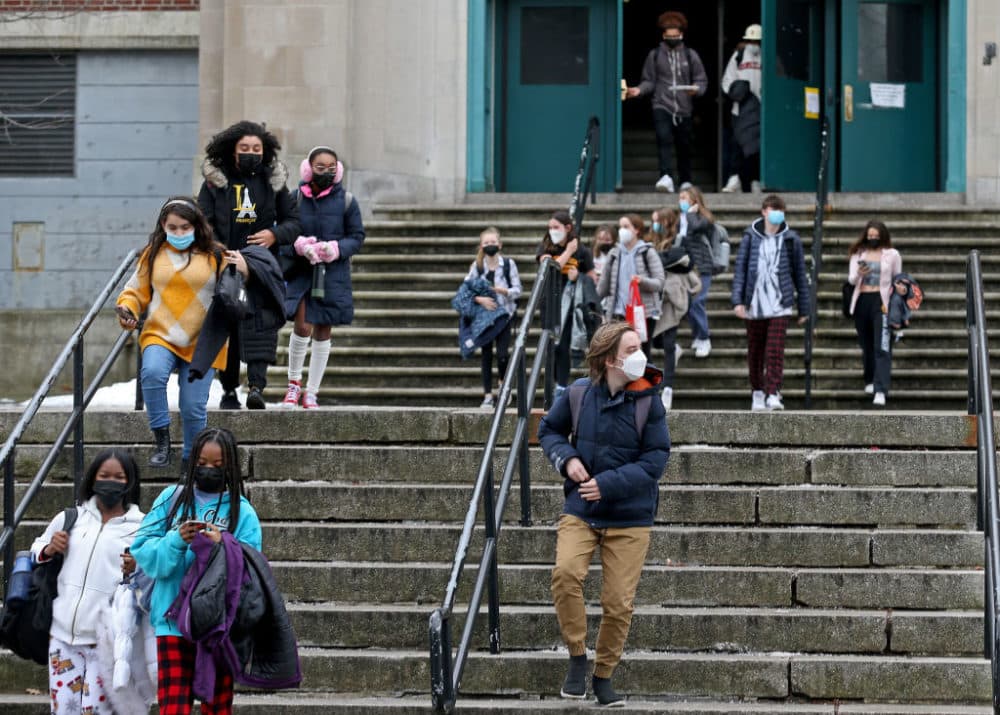Advertisement
Commentary
The 'Great Resignation' doesn't have to be inevitable in Boston schools

My phone was flooded with texts from colleagues earlier this week. They all included the same screenshot: a photo of a Boston Globe headline announcing that Brenda Cassellius, the superintendent of the Boston Public Schools, was resigning.
The truth is, we don’t yet know the reasons for her departure. But my initial feeling was one of emotional solidarity: “Well, I guess we're not alone.”
Because the question of whether my colleagues and I can continue to sustain ourselves in this work is one that we end up discussing every single time we meet. Most of us have been in the profession for close to two decades, and yet we are now struggling to see what happens for us next month, nevermind next year.
This feeling of frustration, or failure, or dissatisfaction, or burnout, or outrage — whatever you choose to call it — is not just a problem among my friends. And it’s not just a Boston problem either. NPR reported just last week that more than 50% of educators are “looking for the exits.” The way we are doing school presently is not working for too many teachers, and too many students, and it is making it increasingly difficult for many of us to want to stay in the profession.
The way I feel now is similar to how I felt in the early days of the pandemic, when we first made the shift to online learning. I lost a connection with many of my students. Rather, I had personal connections to my middle school students — I could text them or call them to check in — but I wasn’t able to maintain a learning connection. Zooms were optional back then, and very few students attended. Work that our school posted online had a 50% to 60% completion rate on most days.
NPR reported just last week that more than 50% of educators are 'looking for the exits.'
It was clear to me that what I was doing was not working. So, together with MIT professor Justin Reich and Harvard professor Jal Mehta, we designed a protocol for eliciting student feedback on what needed to shift in September of 2020.
I ran focus groups with my students. Asked them for feedback. Tried to understand what I needed to change, if they were ever to feel as successful online as they had in person.
I used what they told me to advocate for radical shifts in our school’s schedule and experiment with new forms of parent engagement. I also completely changed the way I thought about my civics course and how to teach it, in an effort to build a learning environment that was entirely rooted in what kids told me they needed.
As a result, we started playing games at the beginning of each class. I dressed up like a chicken to make them laugh. We used amazing narrative nonfiction, like “Just Mercy” and “Enrique’s Journey,” to ensure a kind of coherence to the learning, so that even if a student missed a day, they weren’t re-entering the material in an unfamiliar context. We went slow. Made space for joy. And built in lots of opportunities for revision and make-up work. Was it perfect? No. Was it infinitely better than the first pandemic spring, and more deeply rooted in what students were telling me they needed? Yes.
Advertisement
Right now, educators are both implicitly and explicitly asking for our school, district and state leaders to do the same. Leaders need to ask teachers what they need, and make changes — radical ones if necessary — to better meet the moment. We can forge ahead with “normal” and gamble on attrition numbers not being as high as they currently look (the Bureau of Labor Statistics reports that roughly 43% of currently posted teaching positions are unfilled across the country). Or we can respond to the struggle being expressed by listening, and building something new.
We need to consider that the models we are using in education to staff our classrooms and our school districts are not the right models for this moment: Teachers and students moving in herd-like fashion through six or seven 55-minute class periods a day. No meaningful time for relationship building built into schedules. Twenty-five minute lunches as the only opportunity for students to eat or socialize or process. There’s wildly inadequate time for teachers to plan or grade or communicate with families; forget using the bathroom or eating a meal. Arguably, these were never the right models. They were the models we arbitrarily chose to fund, but there is little evidence to support the idea that they were the right models, particularly for our most vulnerable students.
And in this moment, 31 students packed into a high school classroom with one dual- or triple-certified teacher trying to meet their needs, is clearly not cutting it. Traditional guidance counselor caseloads of one counselor to 250 students are not cutting it. There is more need in our schools, both academic and emotional, and we do not have the capacity to meet it. The disconnect between what young people need to thrive, and what our school systems are offering will only grow, because we continue to invest in the wrong things.
We cannot fully give our students what they need because the system in its current structure, quite frankly, does not allow it.
Young people tell me they need us to slow down, prioritize their relationships and emotional well-being, and find creative ways to help them reconnect to each other and their own identities as learners. But teachers are tasked with administering litanies of standardized tests (an 8th grader in Boston will take ACCESS, MAP, NAEP and MCAS within the next two months, for example), trying to cover two years worth of content in one year (in an effort to make up for pandemic-related learning interruptions), and covering understaffed classrooms on our already minimal breaks.
All of this is what’s making it feel untenable to stay on for too many educators. We cannot fully give our students what they want and need because the system in its current structure, quite frankly, does not allow it. We cannot meet our own needs as human beings, either, because the system in its current structure most definitely does not allow that.
I don't think the Great Resignation is inevitable in our schools. But to stave it off, educational leaders have to be willing to do two things. First, they have to ask students and teachers what currently works for them, and what doesn’t. Second, they have to be willing to change their organizational structure to meet the needs being expressed.
Sustainable and humane school structures may cost more, they may be less “efficient,” but I am confident that making schools more human will also lead to healthier, happier, and thus, more stable school communities. Ones where the table will finally be set in a way that guarantees learning and support for all of our students.
